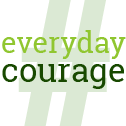School leadership in turbulent times
 As schools prepare to welcome students through their doors, many educators are researching how to talk with their students about the attacks in Charlottesville or Barcelona. Or how to respond to student concerns about diversity, tolerance and equity. Or, ulp, how to address this recent article by Wired, revealing that the state with the highest percentage of online trolls is… Vermont.
As schools prepare to welcome students through their doors, many educators are researching how to talk with their students about the attacks in Charlottesville or Barcelona. Or how to respond to student concerns about diversity, tolerance and equity. Or, ulp, how to address this recent article by Wired, revealing that the state with the highest percentage of online trolls is… Vermont.
Starting these conversations, and addressing our current crisis of digital citizenship takes courage and can often feel uncomfortable, but they all begin with one small step, then another, and another after that. They’re acts in which extraordinary courage soon becomes #everydaycourage, and we’re fortunate to have some leaders in the #vted ecosphere — administrators, educators and students — showing us the way.
Modeling leadership from the top
Directly after the events in Charlottesville, Vermont Secretary of Education Rebecca Holcolmbe shared some encouraging entry points in a memo to the Vermont education community. She emphasized conversations with our communities (students included) as a way to find a path to move forward. In part, she stated:
- “In an increasingly fragmented society, our public schools are one of the few places where people of every socioeconomic class, political perspective, race, religion, gender identity, and disability status come together under one roof not just to better themselves, but to work together to develop common cause. Our schools both reflect and foster the health of our democracy.”
-
“Don’t be afraid to tackle hard issues: your students are already marinating in them through family conversations, social media and the press. Current events are the substance of democracy, and avoiding them makes education irrelevant.”
-
“Questioning our individual implicit biases and assumptions is uncomfortable, but it moves us all towards that more perfect union to which we aspire.”
https://twitter.com/pburkevt/status/898652721892511745
Modeling online leadership at the district level
Michael Berry, director of curriculum, communications and innovation for the MMMUSD-CESU district, is a longtime proponent of creating and sharing videos that encourage conversations. Whether it’s the App-Slam Series, where he and a pair of colleagues mull over great new apps for Chromebooks, or the Curriculum v-log (video-log: like a blog but with videos) series, Berry models transparency. The videos are short and casual, hopefully encouraging other districts to emulate an easy-entry way to begin conversations.

Franklin West superintendent Ned Kirsch (@betavt) founded our state’s bi-monthly #vted twitter chats five years ago, and remains a driving force behind them. Before twitter was cool, Kirsch has been facilitating important conversations that directly relate to making an impact within our state and for our students.
https://twitter.com/betavt/status/900317564336840704
When you’ve got district folk modeling how online video and social media can be used to start conversations and bring others into those conversations, you know you’re doing it right.
Tackling tough subjects gets easier with a PLN
There are no shortage of Vermont educators leaping in and leading online conversations as well. twitter is a very powerful social media platform in Vermont, in particular. In addition to participating in the #vted twitter chat, Vermont educators and principals consistently demonstrate a passionate commitment to supporting each other’s teaching practice and sharing resources for use in the classroom.
In addition to the great work of #charlottesvillecurriculum Ts in VT have been cultivating this resource: https://t.co/WQUIGUkDfH #weleaded
— Christie Nold (@ChristieNold) August 23, 2017
We have one of the most active and celebratory twitter ecospheres around education, and I’d urge any educators looking for support or resources, to jump right in. Even if you’re on the fence about participating, follow this list of more than 500 Vermont educators and principals to get some idea of what a powerful, supportive PLN (Personal Learning Network) can look like. Or follow this list of VT schools and classrooms to get an idea of how to create a dialogue with your community by sharing classrooms and projects with the world.
We're gearing up for the return of our students!! Take a peek at what we were up to at our Opening Ceremony Inservice. #wearecolchester pic.twitter.com/Y5unX7EX1f
— Colchester Schools (@CSDCommunity) August 24, 2017
And all these small moments of #everydaycourage create the spaces we need to tackle difficult conversations.
But our most effective leaders are, of course, our students
Students from Burlington High School’s International Club orchestrated an “All Are Welcome” campaign to support the immigrant population in their community. The students have arranged for downtown Burlington merchants to display their “All Are Welcome” graphic in shop windows, and this past spring, presented on their work at Dynamic Landscapes, Vermont’s statewide education conference. Their message is a powerful conversation-starter, and the courage demonstrated by the students themselves in putting their voices out there should inspire us all.
https://twitter.com/susanblethen/status/866663668196495360
#vted leads the way with #everydaycourage
Whatever the topic, we the educational community needs to play a role in modeling how social media and our own #everydaycourage can support these conversations. As Secretary Holcolmbe said in her memo, our job:
“Is not to tell students what to think, but rather to expose them to the past so they can understand current events in the context of our historical experience and evolution.”
How are you starting these conversations in your school community?
SaveSave

